Which voltage stabilizer should I choose for my washing machine?
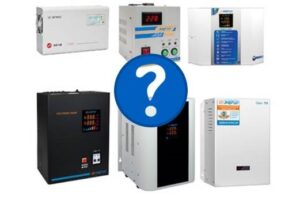 Modern washing machines are distinguished by sensitive electronics - the slightest surges in the electrical network can lead to the “fatal outcome” of the equipment. Meanwhile, the power supply to apartments and houses remains unstable: due to the abundance of appliances, the “demand” for electricity is growing, substations cannot cope, and transformers are knocked out. As a result, voltage drops are recorded on the line, and circuit breakers plugged into sockets burn out. You can protect your washing machine and other home appliances: just select a voltage stabilizer and connect it to the circuit. All that remains is to study the proposed device options.
Modern washing machines are distinguished by sensitive electronics - the slightest surges in the electrical network can lead to the “fatal outcome” of the equipment. Meanwhile, the power supply to apartments and houses remains unstable: due to the abundance of appliances, the “demand” for electricity is growing, substations cannot cope, and transformers are knocked out. As a result, voltage drops are recorded on the line, and circuit breakers plugged into sockets burn out. You can protect your washing machine and other home appliances: just select a voltage stabilizer and connect it to the circuit. All that remains is to study the proposed device options.
How to choose a device?
Choosing a stabilizer for a washing machine is not an easy task. It's all about the range offered by manufacturers: there are many devices of different power, type and cost on sale. To avoid mistakes, it is worth studying the characteristics of the devices and other important parameters. Stabilizers of several types are produced: relay, electronic, electromechanical, inverter and ferromagnetic. Let's consider each option in more detail.
- Relay. A simple and inexpensive option is a toroidal transformer with several outputs and switching via a relay. The disadvantages include constant flickering of the LEDs and low accuracy of adjustment. Also among the disadvantages is increased noise - the device periodically makes clicks.
- Electronic. They are thyristor or seven-stor transformers with stepwise voltage stabilization. Due to its resistance to electrical loads and inrush currents, adjustment occurs as smoothly and silently as possible.There is also no blinking of lamps, since there are more “degrees” of equalization than with relay devices. But the equipment has several disadvantages: high cost, low accuracy of adjustment, and the creation of radio interference.
Electronic and inverter stabilizers are considered the most suitable for washing machines.
- Electromechanical. Also called servo driven. Here the contact slider moves on a circular transformer, due to which voltage surges are smoothed out. Stepless stabilization system with precise adjustment and containment of short-term loads. As for the disadvantages, there are two of them: low response speed and insufficient frost resistance.
- Inverter. They are distinguished by high-precision regulation due to a wide input voltage range. Able to work at low temperatures, compact and responds to surges instantly. Disadvantages: high cost and inability to cope with high loads.
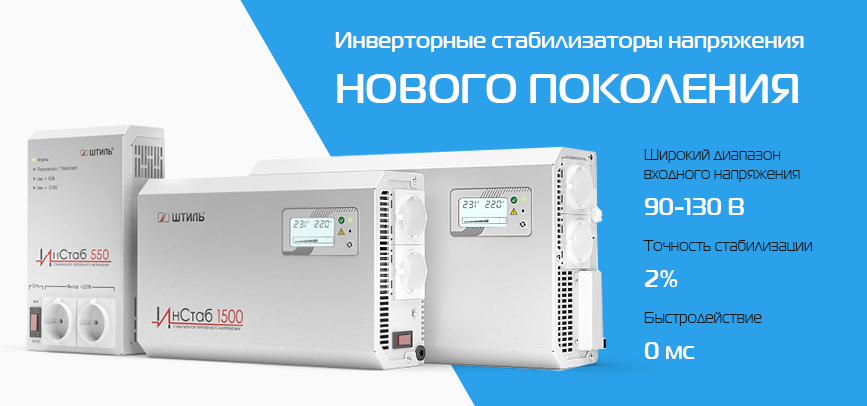
- Ferromagnetic. They belong to the old type of equipment and are currently almost not produced. The advantages include high accuracy and the ability to work at low temperatures. Disadvantages: noisy.
Any stabilizer is suitable for a washing machine, but it is better to choose reliable and expensive models - electronic and inverter. In addition to the type of device, operational characteristics are also taken into account. So, you should pay attention to at least 5 parameters.
- Number of phases. Three-phase equipment is necessary if the connection is designed for 380V. With a load of 220V, it is allowed to connect either one three-phase stabilizer or three single-phase ones. The last option is preferable.
- Load. The indicator directly depends on the connected washing machine. You should find out the total consumption in watts and sum it up with other devices connected to the branch.Then we add a margin of 20% to compensate for the inrush currents. Be sure to look at the voltage deviation coefficient, which is equal to 1 in a 220V network, 1.69 for 130V lines and 1.47 for 270V. The final value will serve as a starting point.
- Mode. The best models are those with two operating modes: bypass and stabilizer. The first program allows you to delay equalization when the electric current is “quiet” and is automatically activated when the network is overloaded. Due to this feature, the device works longer.
- Overvoltage protection. It will help keep the device from burning out if the voltage value exceeds the maximum norm. For safety reasons, the stabilizer will be switched off immediately.
- Firm. It is recommended not to experiment, but to select equipment from a trusted manufacturer. Thus, the brands Quattro, Lider, Shtil, Volter, Energotech, Progress, Wester, Resanta, Rucelf, Powercom, Sven, Soyuz, Energia, Huter, Era, Suntek, Ortea have proven themselves to be excellent.
Having studied the capabilities of the stabilizer, we proceed to selecting suitable equipment. Ideally, it is necessary to analyze the market, identify “leaders”, compare their potential and characteristics. A review of the best models will help you in your search.
Powerman AVS 3000P
Relay stabilizer with a total power of 3 kV A. The device is single-phase, therefore suitable for operation in a network with a voltage of 220 V. Attaches to the wall, cools only naturally, weighs 7.2 kg, measures 22 cm wide, 26 cm high and 13 cm deep. It is worth paying attention to the operating temperature range: Powerman needs to be started at 0-40 degrees.
As for stabilization, the device works with an accuracy of 8%. Compensation for differences begins 7 ms after the failure is detected. Due to the efficiency of 98%, the model is considered highly efficient, spending a minimum of energy to correct the electric current. Whether the Powerman AVS 3000P is suitable for a washing machine depends on the power of the latter. So, this stabilizer is designed for the following potential: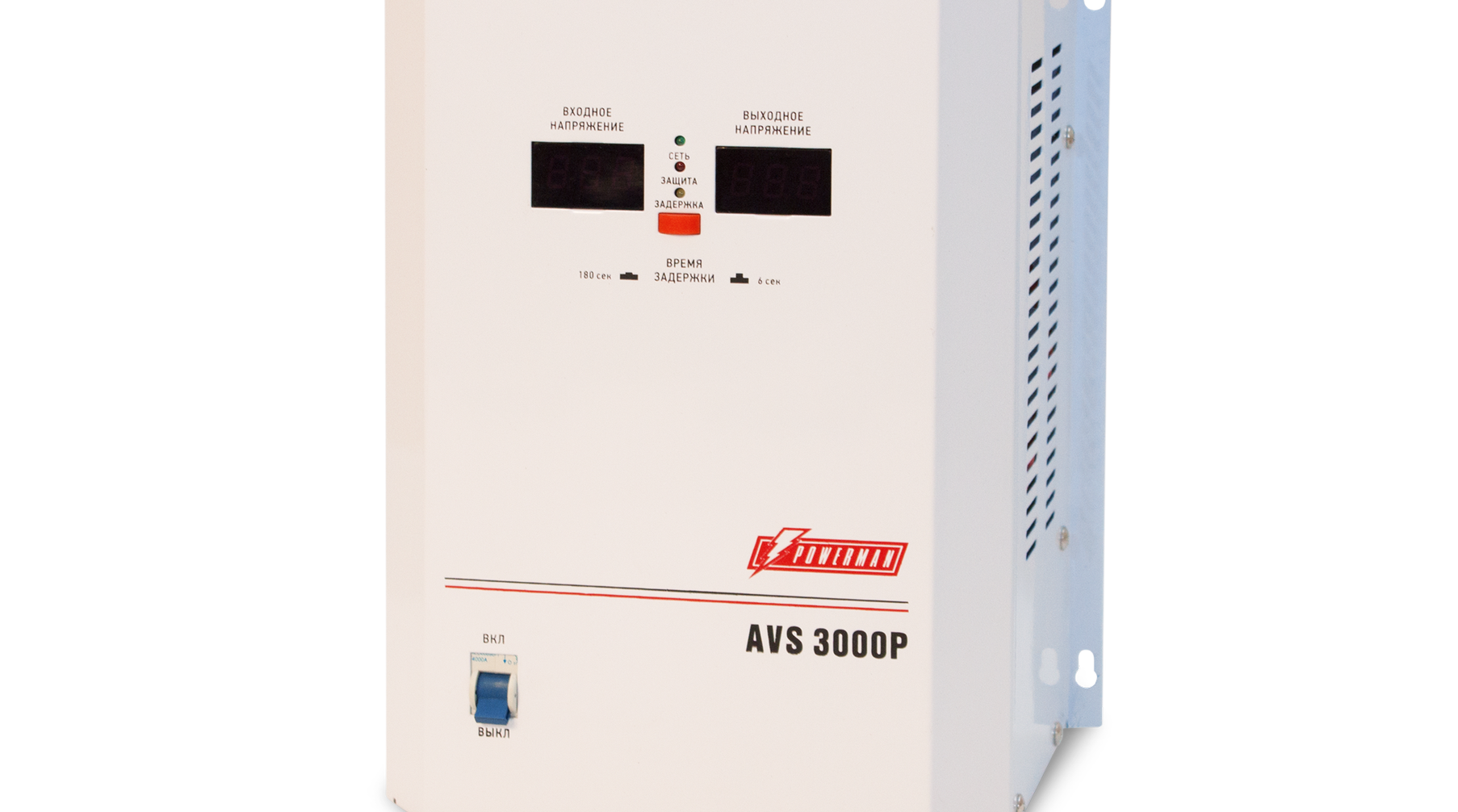
- input voltage: operating – 110-260V, limit – 90-275V;
- output voltage – 202-238V;
- input frequency – 50-6o Hz.
The Powerman stabilizer is quite safe to use. It provides protection against short circuits, overheating, overvoltage and interference. The device case has a protective class IP20, which allows you to run the device at humidity levels up to 95%.
Resanta ASN-12000/1-C
Relay single-phase floor stabilizer, capable of equalizing current in the range from 140V to 260V, and outputting 202-238V. “Responds” to voltage surges within 7ms, while the correction accuracy reaches 8%. The system also provides a “Bypass”, which is needed for safer operation of the device in transit mode. The user will also be pleased with the high total power of 12 kV A. There is a voltmeter on the front panel of the stabilizer, with which the voltage at the input and output is monitored. The output signal is supplied in the “correct” form, which increases the efficiency of the device. By the way, the efficiency of the transformer reaches 97%.
The most effective are stabilizers with an efficiency of 97%.
As for safety, Resanta is protected from short circuits, overheating, overvoltage and interference. There is also forced cooling, which allows you to quickly and efficiently remove heat from the heating elements of the system. Due to the ventilation provided, the device can be used at temperatures from 0 to 45 degrees and at humidity up to 80%.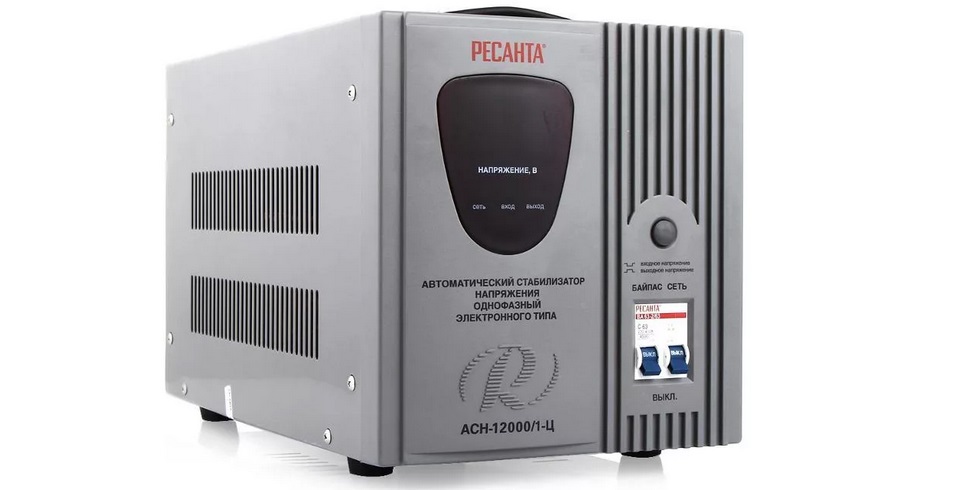
ERA SNPT-5000-C
Another relay floor stabilizer, with which you can adjust the voltage supply to the washing machine on a 220V network. This is a single-phase device with a surge accuracy of up to 8% in 20 ms. To monitor the potential, a digital voltmeter display is displayed on the front panel. The characteristics are as follows:
- input voltage – 140-260V;
- output voltage – 202-238V;
- Efficiency – 95%;
- frequency – 50-60 Hz;
- total power – 5 kV A.
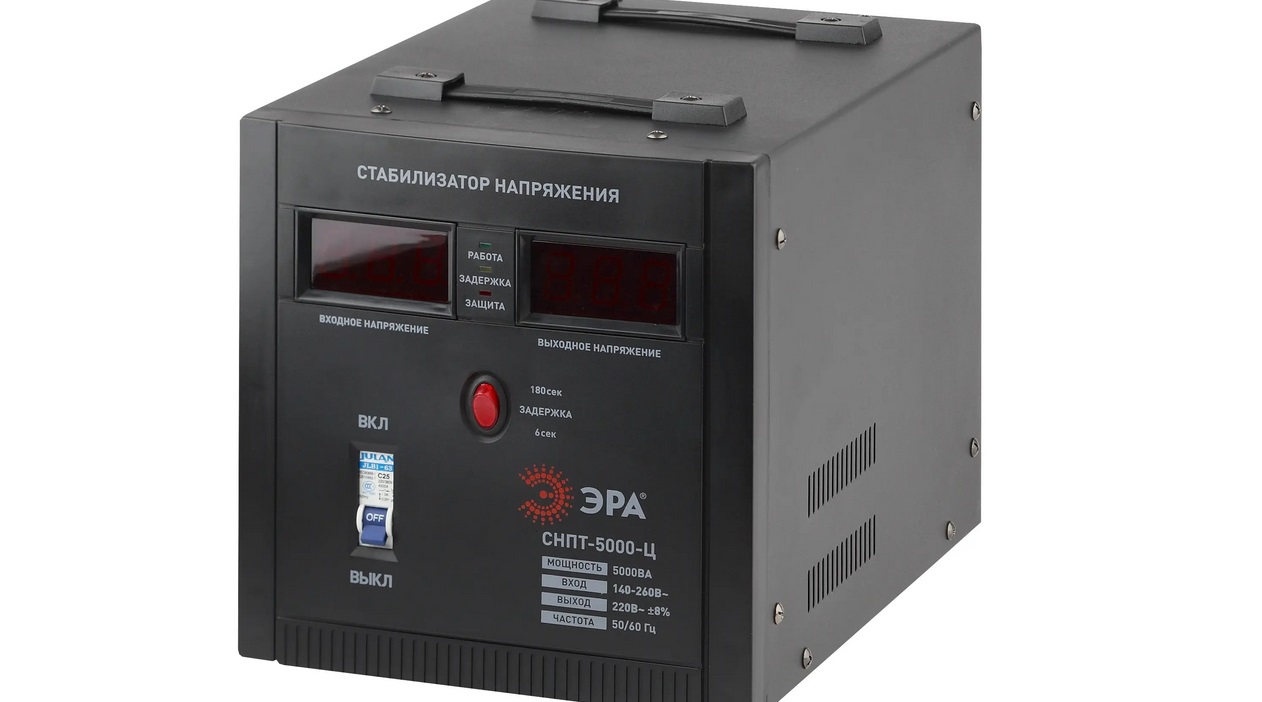
To operate ERA SNPT-5000-C, you need a temperature range of 5-40 degrees and humidity up to 85%. The provided protection class is IP20, and safety is also ensured by emergency operation for short circuit, overheating, network overload and interference. The owner of the machine will also be pleased with the start delay, which will allow stopping the operation of the washing machine as carefully as possible for the electronics. In terms of size, the ERA is quite compact: 22 cm wide, 25.6 cm wide and 35.2 cm deep. The device weighs 9.5 kg.
Volter Smart-4 (3.5 kW)
An inverter stabilizer with an active power of 3.5 kW and a total power of 4.4 kVA is an excellent option for a washing machine. It is a single-phase device with a high accuracy of response to voltage drops - 0.5%. Supports Bypass mode, which allows you to extend the life of the unit. The remaining characteristics of Volter Smart-4 are as follows: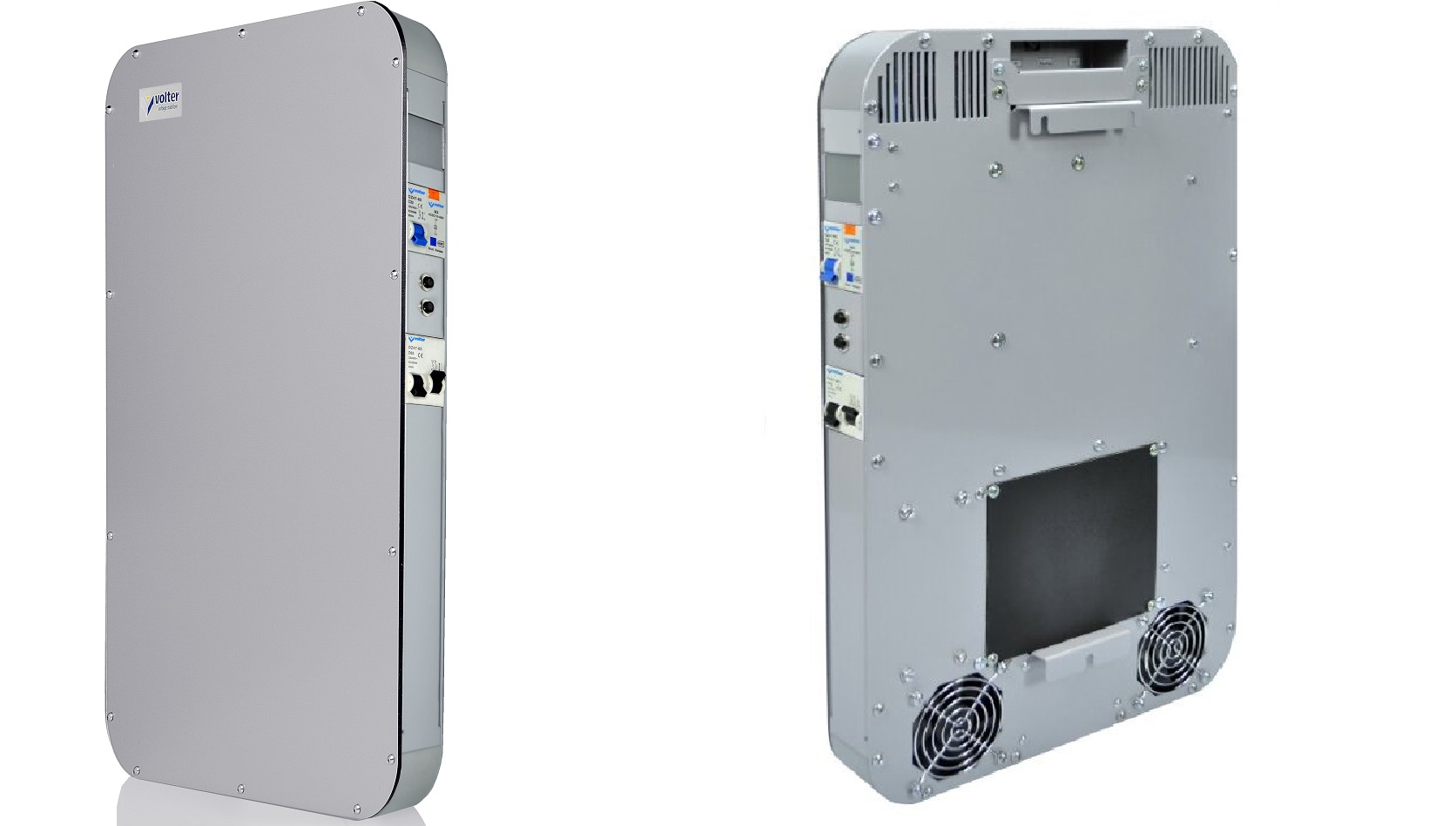
- input voltage: operating – 110-330V, limit – 90-380V;
- output voltage – 219-221V;
- frequency – 47-53Hz;
- noise level – 20 dB;
- protection class – IP
The Volter stabilizer provides universal placement: both floor and wall. There is cooling, a start delay and a digital display. Safety has also been thought through, including protection of the mechanism from current leakage, overheating, overload and interference.The device operates at a humidity of 40-80% and a temperature from 1 to 40 degrees.
Interesting:
Reader comments
- Share your opinion - leave a comment


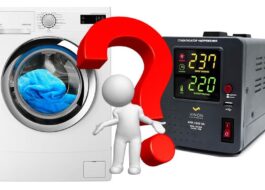

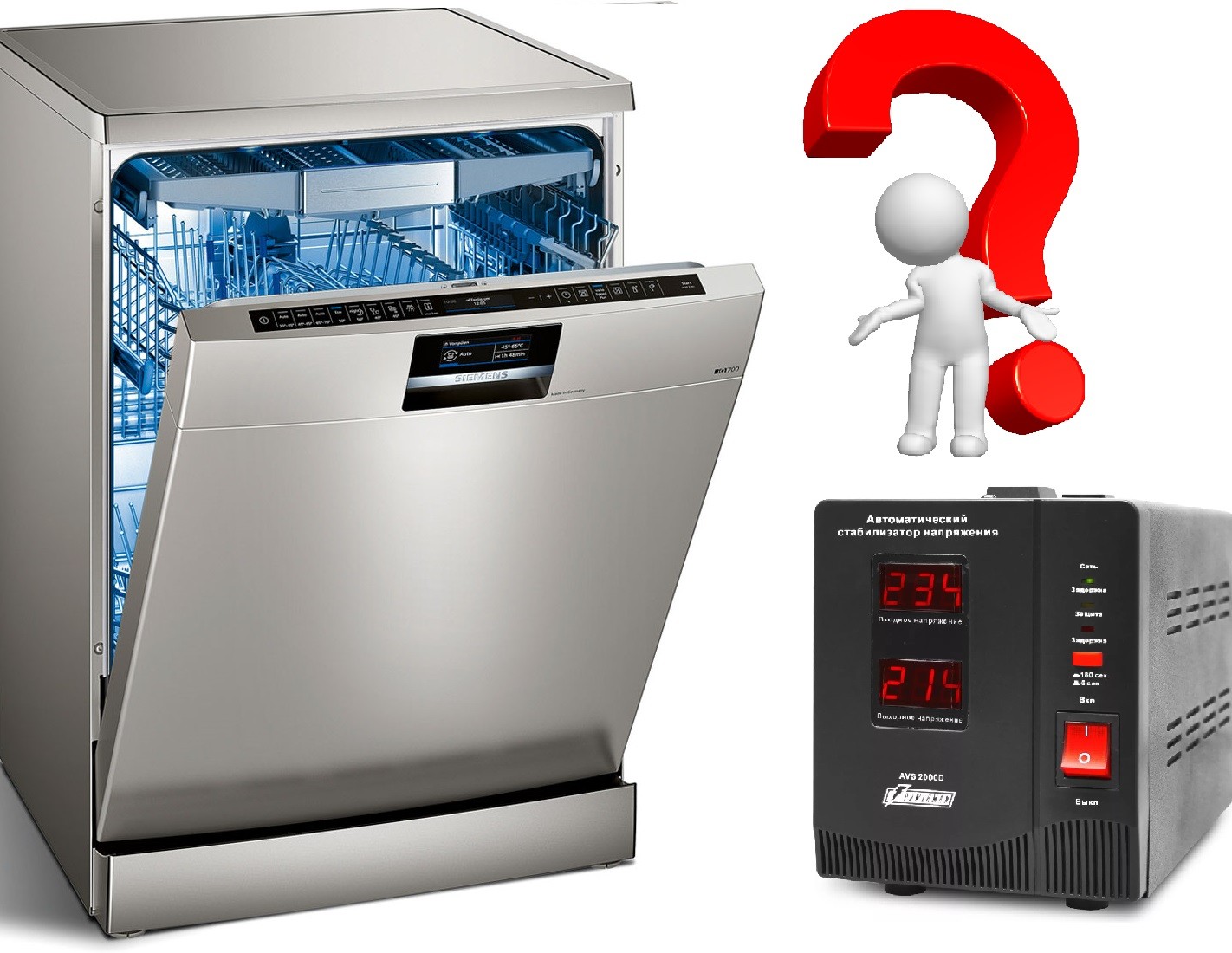
















Add a comment